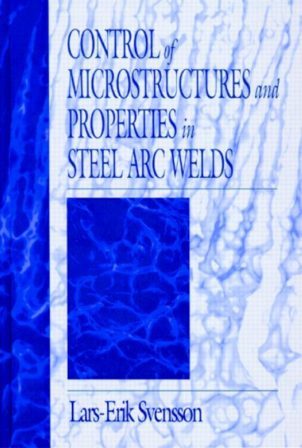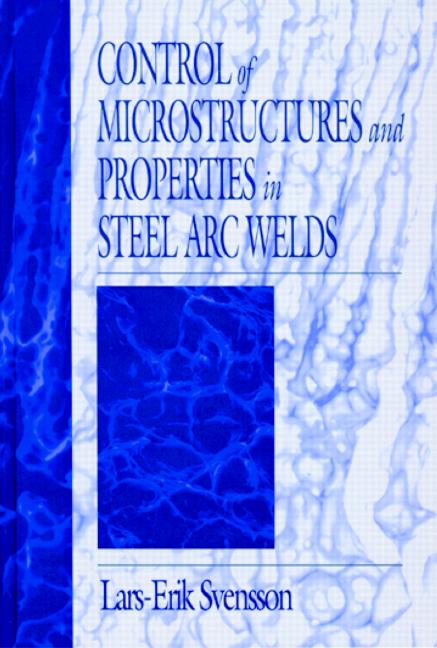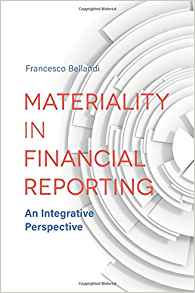
cost of Ebook is 15$ .Email us to send PDF. then you can download the Ebook. To be sure, you can request to send several sample pages from the Ebook.
دانلود ایبوک Control of Microstructures and Properties in Steel Arc Welds
کتاب Control of Microstructures and Properties in Steel Arc Welds در آرشیو گیگاپپیر موجود است. جهت خرید کتاب با ما مکاتبه کنید.
مشخصات کتاب Control of Microstructures and Properties in Steel Arc Welds

Control of Microstructures and Properties in Steel Arc Welds
By Lars-Erik Svensson
Edition 1st Edition
First Published 24 November 1993
eBook Published 20 September 2017
Pub. location New York
Imprint Routledge
Pages 256 pages
ISBN: 9780849382215
eBook ISBN 9781351457972
Subjects : Engineering & Technology, Physical Sciences
درباره PDF کتاب Control of Microstructures and Properties in Steel Arc Welds
Control of Microstructures and Properties in Steel Arc Welds provides an overview of the most recent developments in welding metallurgy. Topics discussed include common welding processes, the thermal cycle during welding, defects that may occur during the welding process, the metallurgy of the material, metallurgical processes in the heat-affected zone and the fused metal, and the relationship between microstructures and mechanical properties.
The book’s final chapter presents examples of welded joints, illustrating how modern theories are capable of predicting the microstructure and properties of these joints. This book is an excellent resource for welding engineers, metallurgists, materials scientists, and others interested in the subject.
https://www.crcpress.com/Control-of-Microstructures-and-Properties-in-Steel-Arc-Welds/Svensson/p/book/9780849382215
فهرست مطالب کتاب Control of Microstructures and Properties in Steel Arc Welds
chapter 1 | 54
Hide abstract keyboard_arrow_up The edge surfaces of the two pieces of material to be joined together are prepared in a manner suitable for welding. Some common types of joint preparations for steels are shown in Figure 1.2. Naturally, there is an almost unlimited number of such preparations and only the principal configurations are shown. The most common welds are butt welds, where the plates to be joined are approximately in same plane, and fillet welds, where the surfaces of the plates are approximately at right angles to each other. However, fillet welds are usually made without edge preparation, while if plates in T-joints are made with edge-prepared plates, these are also called butt joints (see Figure 1.2).
chapter 2 | 28
Hide abstract keyboard_arrow_up The key properties required from structural steels are strength, toughness, and weldability. From the steelmakers’ point of view, economy is a fourth requirement, which undoubtedly has stimulated many of the developments in steel metallurgy that have resulted in modern alloys and their associated technologies.
chapter 3 | 34
Hide abstract keyboard_arrow_up The H A Z can be divided into several subzones, depending on the peak temperature that the material has experienced. Closest to the fusion line the steel reverts first to austenite and then possibly to 5-ferrite, if the carbon content is low. However, this zone, which reaches temperatures in excess of 1500°C (2700°F), is very narrow and is seldom noticed. One effect that can occur in this zone is that it becomes partially molten only to resolidify without significant mixing with the rest of the weld metal.
There can even be a very thin layer which is completely molten, but has not mixed with the rest of the weld pool. An unmixed zone is created, but in most steels considered here, this zone is of little consequence and will not be dealt with further. The austenite grain size is often smaller in this zone than in the coarse-grained zone lying next to it. This is thought to be due to the austenite to 8-ferrite transformation, followed rapidly by a transformation back to austenite.
chapter 4 | 54
Hide abstract keyboard_arrow_up Although these subjects will be discussed separately, it is emphasized that they interact to generate the final structure of the weld metal. Traces of each of the processes can be found in the microstructure and often have a direct influence on the properties of the welded joint. The phase transformations that occur are to a large extent similar to those in the H A Z . Only the differences in the phase transformations will be highlighted here.
chapter 5 | 38
Hide abstract keyboard_arrow_up The safe use of an engineering structure relies on each of its components possessing the necessary mechanical properties, the most important of these properties usually being strength and toughness. The main points described in this chapter are how these properties are measured and how they can be influenced by changes in the microstructure. Tensile testing alone is not enough to characterize the properties of the steel because the tendency for brittleness, which occurs at lower temperatures, also must be accounted for. Toughness testing is thus necessary. Impact toughness testing is often used, but a fracture mechanics approach is frequently necessary.
In the heat-affected zone (HAZ), brittle behavior can be found in several zones, such as the coarse grained zone, the intercritically heated zone, and the subcritical zone. A special problem relates to the so-called local brittle zones (LBZs) that appear in the intercritically heated zone or in the intercritically reheated coarse-grained regions. In the weld metal, the same fundamental correlation between microstructure and properties exists as in the H A Z . However, additional complica tions may arise due to the relatively high content of nonmetallic inclusions. Also, the fact that the weld metal is a cast structure that leads to pronounced chemical segregation can affect the mechanical properties, especially tough ness.
chapter 6 | 32
Hide abstract keyboard_arrow_up To quickly determine which heat flow mode operates, the diagram of Myhr and Grong, shown in Figure 1.39 and reproduced in Figure 6.2, is used. The dimensionless parameters are 8 = vd/2K and Qp/n. Here, is the normalized peak temperature (Tp – T0)/(Tm – T0), Tp is the peak temperature, Tm is the melting temperature, T0 is the preheat temperature, and n = (qv)/(4nK2pc(Tm – T0))-
rp = (2/ner2 [{q’lv)l{pc(Tp – 7 0 ) ) p (6.1)
When the approximate position of an isotherm has been determined, the thermal cycle in a specific point can be determined, using Equation 1.11
where b = y2 + z2-
Taking the data for a C-Mn steel and analyzing the point r = 9 mm (corresponding to a peak temperature of 1300°C, 2350°F) gives the thermal cycle shown in Figure 6.4. The cooling time from 800 to 500°C can then be calculated using Equation 6.3, which is the same as Equation 1.15:
giving Atm as 12.5 s. The cooling time will vary from 8.6 s in an ordinary carbon steel to 17.1 s in a low-alloy steel. This of course is a relatively large variation in cooling time and can significantly alter the microstructure and properties of the heat-affected zone (HAZ).

